SC<A>LE - SCA<P>E - SC<O>PE
architectural intervention on/in a car, panoramic video
2011

Research project, 360°-panoramic Video & performative Installation (on/in a car) -
- MAK Center for Art and Architecture, at Schindler House - Los Angeles 2011
[within MAK Schindler Scholarship/Artists and Architects-in-Residence Program - MAK Museum of Applied Arts Vienna & MAK Center Los Angeles]
Concept, Realization Gregor Holzinger, Florian Schafschetzy, Eva Sommeregger
Voice/Live GPS Claudia Slanar
Sound Design Abby Lee Tee
Many thanks to Matthew Coolidge and Aurora Tang at CLUI Center for Land Use Interpretation Los Angeles and Kogeto Technologies New York
The car as an architectural ready-made. Driving not only as a geographic, but as a cinematic experience. The car as a perception apparatus, generating a cartography from a roadmovie-point-of-view - a motion-based panoramic mapping (360° x 360°) of non-prominent places and peripheral infrastructural landscapes.
- MAK Center for Art and Architecture, at Schindler House - Los Angeles 2011
[within MAK Schindler Scholarship/Artists and Architects-in-Residence Program - MAK Museum of Applied Arts Vienna & MAK Center Los Angeles]
Concept, Realization Gregor Holzinger, Florian Schafschetzy, Eva Sommeregger
Voice/Live GPS Claudia Slanar
Sound Design Abby Lee Tee
Many thanks to Matthew Coolidge and Aurora Tang at CLUI Center for Land Use Interpretation Los Angeles and Kogeto Technologies New York
The car as an architectural ready-made. Driving not only as a geographic, but as a cinematic experience. The car as a perception apparatus, generating a cartography from a roadmovie-point-of-view - a motion-based panoramic mapping (360° x 360°) of non-prominent places and peripheral infrastructural landscapes.


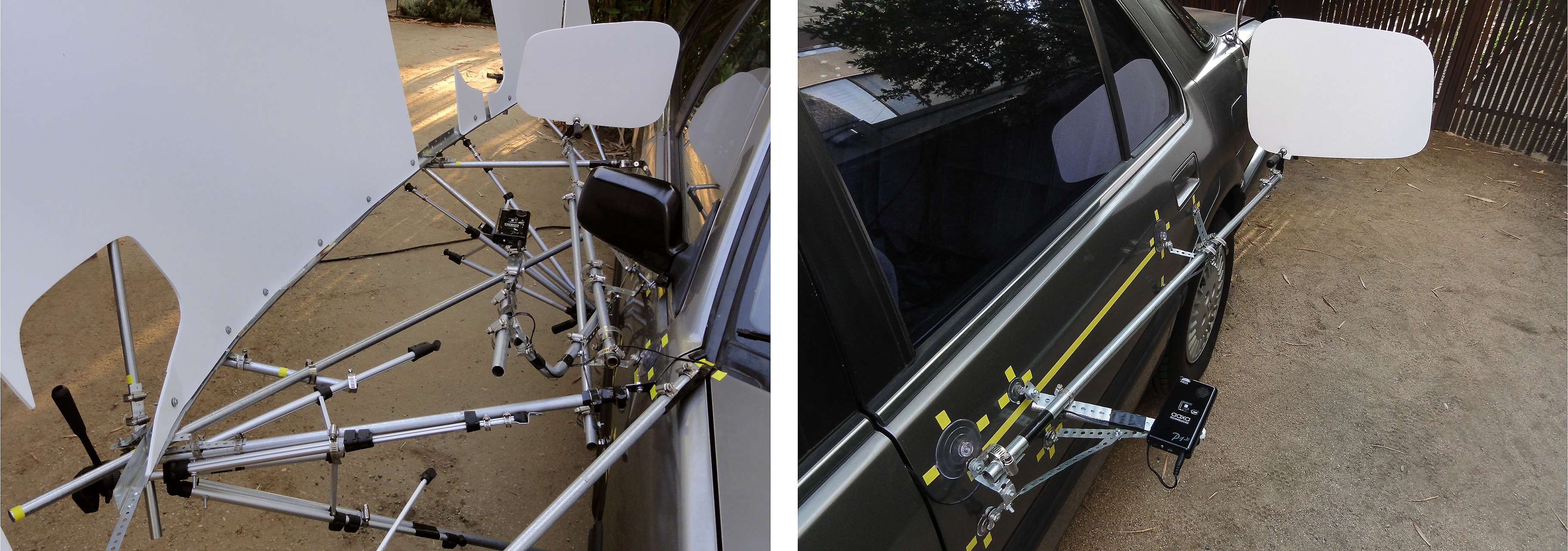

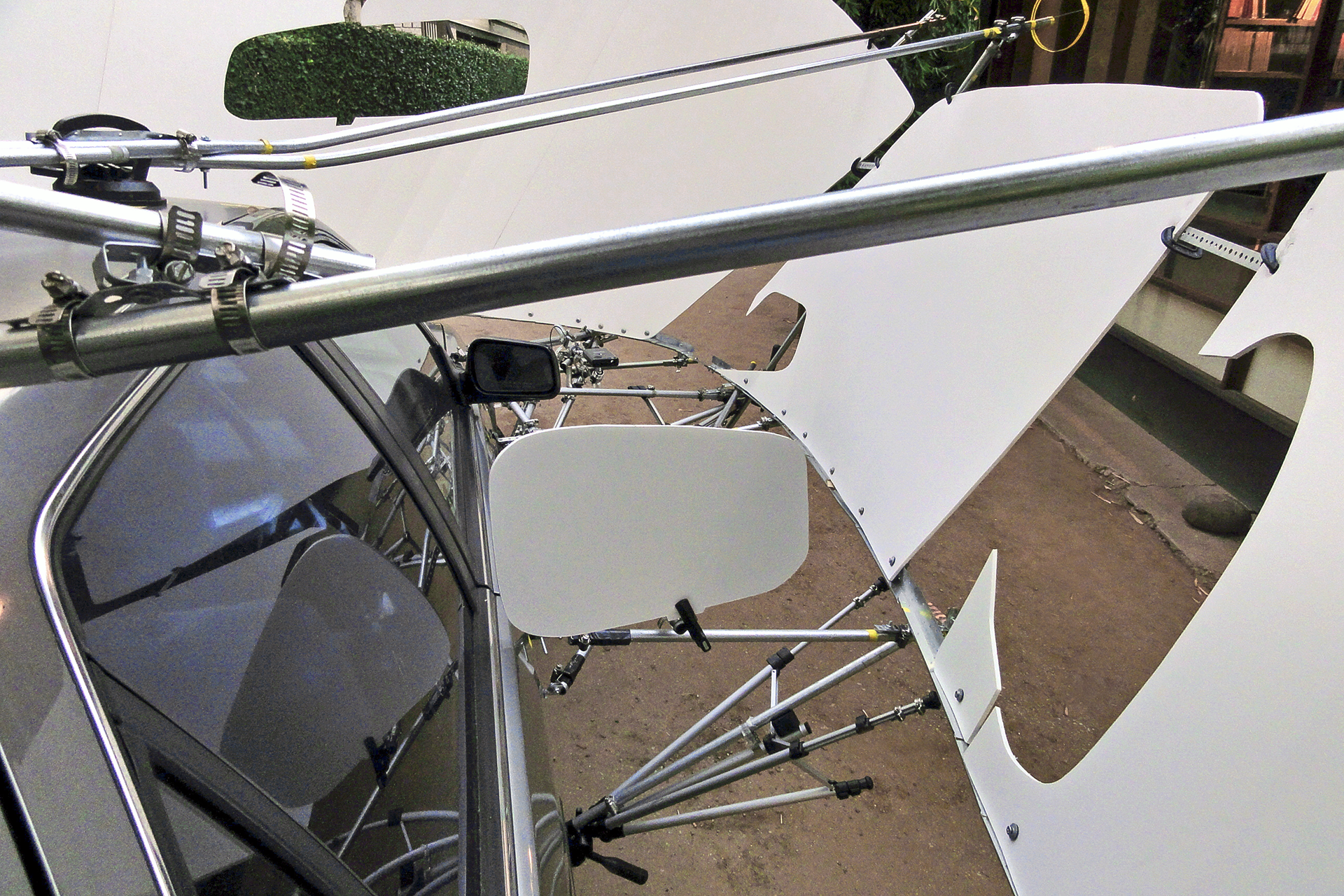
→ scaleExploring infrastructural landscapes, it becomes obvious that infrastructure not only provides the framework for moving patterns as such, but foremost informs the very patterns of perception. When passing by in a car, the view on the surroundings is rendered a cinematic experience. Landscape becomes an ephemeral and transient projection from a floating perspective, its scale becomes loose.
→ scapeHistorically landscape is a framed view on a piece of land. 18th Century English garden architecture arranged pavilions, ruins, trees and lakes in the garden, accentuating certain views on idealized nature informed by landscape painting. Current discourse treats landscape as a continuous field without distinction whether man-made or natural. It is characterized by the loss of figure-ground relationships dominating 20th century urban design, which directly associated building mass with a determined function. Space is rather treated as a continuously mediated field, thus negotiable and takes into account a presence of the participant. Space is not a vessel, it is produced/practiced by its protagonists, creating their very own space-time.
→ scope A *-scope has always been used a tool for inspection, i.e. telescope, microscope, kaleidoscope. We face an age in which the human sensory organs and physical body get inextricably interconnected with their media extensions. Gadgets and prostheses allow for accessing hyperspaces. Virtual and geographical realms overlap, are even coextensive. A GPS-device in a car, Google Earth, Street View and such applications create their own space intersecting with the geographical. This current state exceeds the three-dimensional, redefining what falls within the scope of the architectural. How might it be mapped / drawn? What might cartography be like from a moving point of view? With the car being the tool for examination, a car-scope, what does it reveal?
→ scapeHistorically landscape is a framed view on a piece of land. 18th Century English garden architecture arranged pavilions, ruins, trees and lakes in the garden, accentuating certain views on idealized nature informed by landscape painting. Current discourse treats landscape as a continuous field without distinction whether man-made or natural. It is characterized by the loss of figure-ground relationships dominating 20th century urban design, which directly associated building mass with a determined function. Space is rather treated as a continuously mediated field, thus negotiable and takes into account a presence of the participant. Space is not a vessel, it is produced/practiced by its protagonists, creating their very own space-time.
→ scope A *-scope has always been used a tool for inspection, i.e. telescope, microscope, kaleidoscope. We face an age in which the human sensory organs and physical body get inextricably interconnected with their media extensions. Gadgets and prostheses allow for accessing hyperspaces. Virtual and geographical realms overlap, are even coextensive. A GPS-device in a car, Google Earth, Street View and such applications create their own space intersecting with the geographical. This current state exceeds the three-dimensional, redefining what falls within the scope of the architectural. How might it be mapped / drawn? What might cartography be like from a moving point of view? With the car being the tool for examination, a car-scope, what does it reveal?
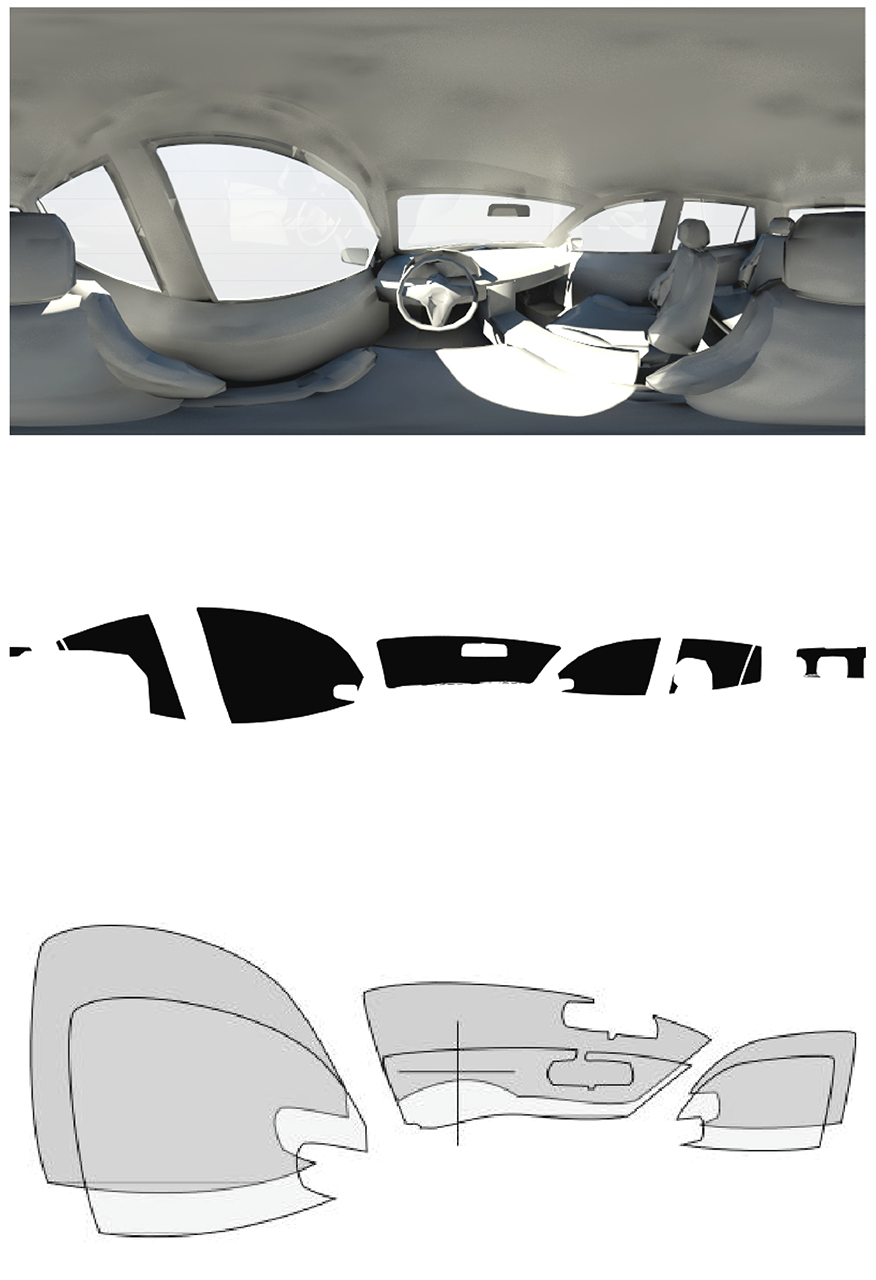
top to bottom:
1. Panoramic rendering (360°) of car interior (Honda Accord = the ‘site’)
2. Visual field of the driver through car windows (developed view/ unrolled geometry of car windows and sight obstructions/occlusions from the visual field of the driver
3. Comparison of deviating fields of vision (tall young and very short old person) - ARGUS sight analysis system [Hudelmaier, 2003]
AUTO- INSTALLATION - Architectural Intervention in/on a car
The installation interpretes the car as a kind of perception apparatus for an "automotive flaneur" and "armchair-discoverer" of non-prominent places - the car as a hyper-local architectural space, and driving as a not only geographic, but also cinematic experience.
By entering the car, the viewer is confronted with a multi-dimensional environment: The driver´s field of view referring to the outside – such as window panes as well as side and rear mirrors – is manipulated in a way suggesting a movement of the car through several landscapes – a spatial palimpsest of places - at the same time. All additional means of perception employed in a car in order to extend the perception of the driver, such as GPS navigational devices and route-planning maps/additional info on head-up display screens on the windshield, are multiplied in number, offering a slightly self-contradictory plurality of apocryphal informations and adding to the highly over-informed position of the driver within this perception apparatus.
While driving spatial perception becomes cinematic perception - the car’s windows are rendered projection surfaces of the surroundings passing by. The car´s interior space becomes dislocated not only through the potential driving movement as such, but foremost through the multiple perspectivity of the projected videos of various infrastructural deserts – one for each window and mirror of the car – creating a continuous real-time ‘imposition’ of various places that start to intersect within the inner space of the car, interpreting the car as a mobile, multi-local place/a ‘hyper-locality’.
The installation interpretes the car as a kind of perception apparatus for an "automotive flaneur" and "armchair-discoverer" of non-prominent places - the car as a hyper-local architectural space, and driving as a not only geographic, but also cinematic experience.
By entering the car, the viewer is confronted with a multi-dimensional environment: The driver´s field of view referring to the outside – such as window panes as well as side and rear mirrors – is manipulated in a way suggesting a movement of the car through several landscapes – a spatial palimpsest of places - at the same time. All additional means of perception employed in a car in order to extend the perception of the driver, such as GPS navigational devices and route-planning maps/additional info on head-up display screens on the windshield, are multiplied in number, offering a slightly self-contradictory plurality of apocryphal informations and adding to the highly over-informed position of the driver within this perception apparatus.
While driving spatial perception becomes cinematic perception - the car’s windows are rendered projection surfaces of the surroundings passing by. The car´s interior space becomes dislocated not only through the potential driving movement as such, but foremost through the multiple perspectivity of the projected videos of various infrastructural deserts – one for each window and mirror of the car – creating a continuous real-time ‘imposition’ of various places that start to intersect within the inner space of the car, interpreting the car as a mobile, multi-local place/a ‘hyper-locality’.

AUTO-INSTALLATION -
Concept of projective shadows within the field of vision (as a spatial mapping of sight obstructions / occlusions in the visual field → ‘sight-shadows’)
Concept of projective shadows within the field of vision (as a spatial mapping of sight obstructions / occlusions in the visual field → ‘sight-shadows’)

Interior view of car-installation -
with interior rear mirror, its sight-shadow in windshield projection screen, as well as its projection apparatus and projection screen
(including sight-shadow of headrest within projective reflection shadow of rear mirror´s viewing range [far right] → as a detail continuation of the concept of sight-shadow apertures in the visual fields of the respective windows/mirrors → sight-shadow within another sight-shadow)
with interior rear mirror, its sight-shadow in windshield projection screen, as well as its projection apparatus and projection screen
(including sight-shadow of headrest within projective reflection shadow of rear mirror´s viewing range [far right] → as a detail continuation of the concept of sight-shadow apertures in the visual fields of the respective windows/mirrors → sight-shadow within another sight-shadow)
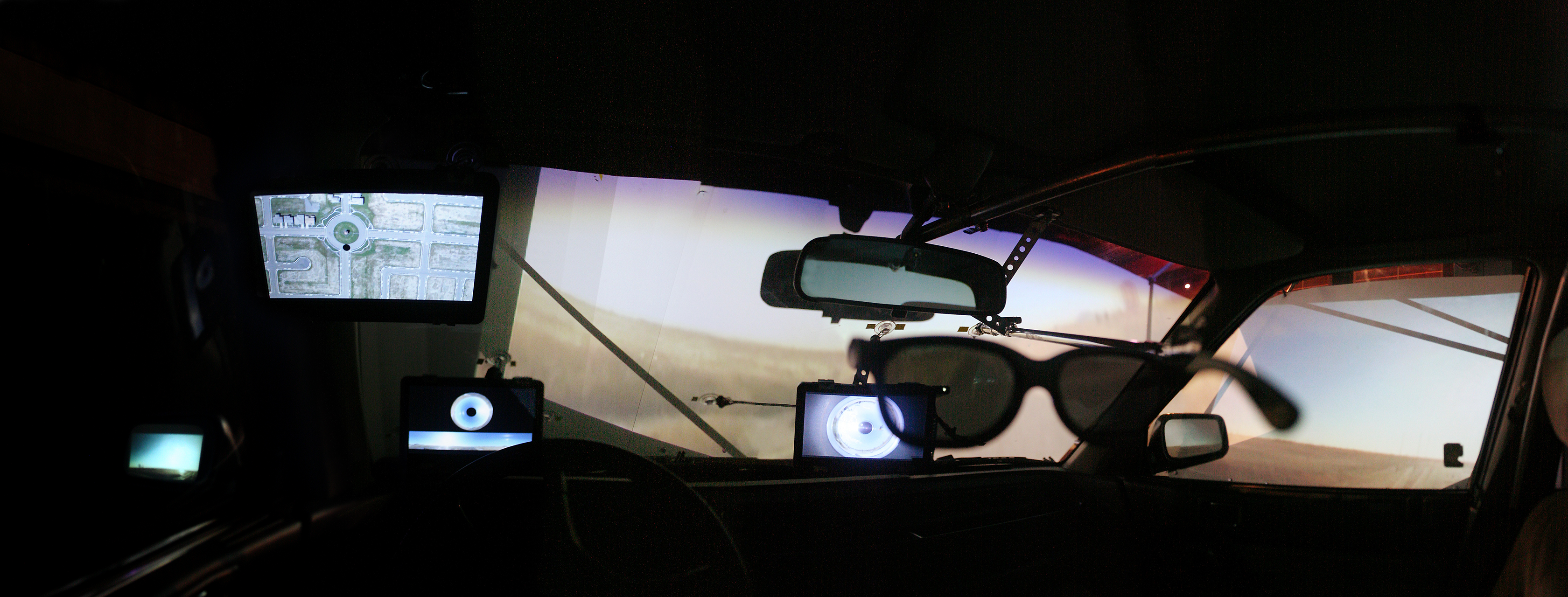
INTERIOR VIDEO-INSTALLATION
Multi-perspectival video projection - 270°-Panorama out of driver´s perspective
→ perspectival alignment of all video projections out of the driver´s viewpoint, marked by eyeglasses)
→ side and rear mirror views (manipulated by means of detail video projections adjusted to exactly fit the visual field/range of sight reflected by the mirror)
→ GPS-Screens providing additional (apocryphal) information + live commentary/spoken directions + sound design through the car´s audio speakers
— Performance / GPS-Voice-over Script
Multi-perspectival video projection - 270°-Panorama out of driver´s perspective
→ perspectival alignment of all video projections out of the driver´s viewpoint, marked by eyeglasses)
→ side and rear mirror views (manipulated by means of detail video projections adjusted to exactly fit the visual field/range of sight reflected by the mirror)
→ GPS-Screens providing additional (apocryphal) information + live commentary/spoken directions + sound design through the car´s audio speakers
— Performance / GPS-Voice-over Script
VIDEO-PROJECTION FOOTAGE
Video projection footage / 360°-video - Rio Vista, CA
3:30 min (loop)
[Full panoramic video, split to synchronous 5-channel video (2 projector image frames + 3 mirror perspectives), looped to a video documentation of a seemingly endless travel through a deserted exuburban street grid]
3:30 min (loop)
[Full panoramic video, split to synchronous 5-channel video (2 projector image frames + 3 mirror perspectives), looped to a video documentation of a seemingly endless travel through a deserted exuburban street grid]
Los Angeles Interchange 360°-video [excerpts]
Panoramic video of the space sequence driving through the Harry Pregerson Interchange in South Central L.A. (a highly complex freeway junction with 5 levels/~32 m high), as an example of an'infrastructural desert' within the Los Angeles cityscape.
Videos in collaboration with Eva Sommeregger and Florian Schafschetzy, within MAK Center for Arts & Architecture Schindler Residency, Los Angeles 2011
Panoramic video of the space sequence driving through the Harry Pregerson Interchange in South Central L.A. (a highly complex freeway junction with 5 levels/~32 m high), as an example of an'infrastructural desert' within the Los Angeles cityscape.
Videos in collaboration with Eva Sommeregger and Florian Schafschetzy, within MAK Center for Arts & Architecture Schindler Residency, Los Angeles 2011


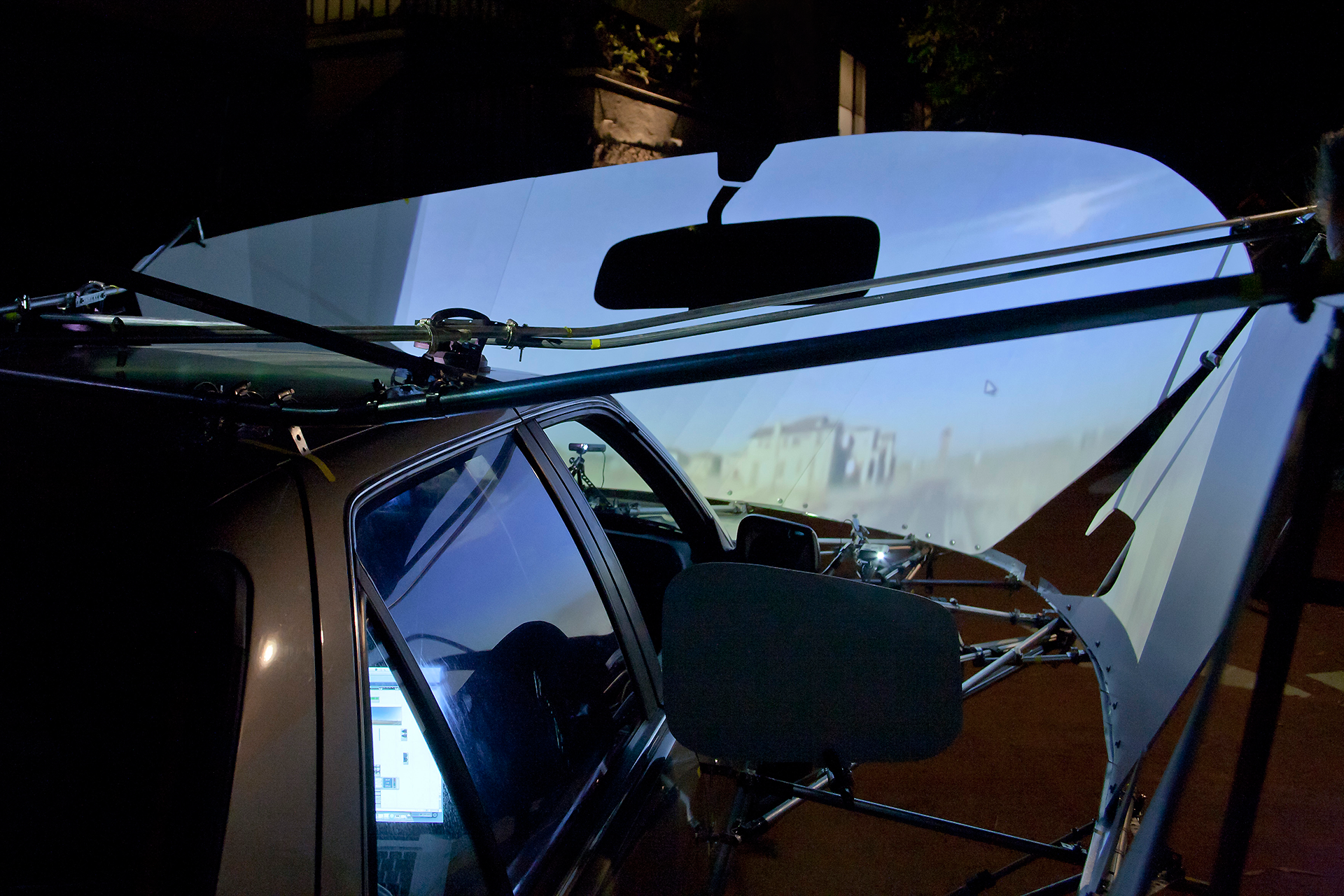


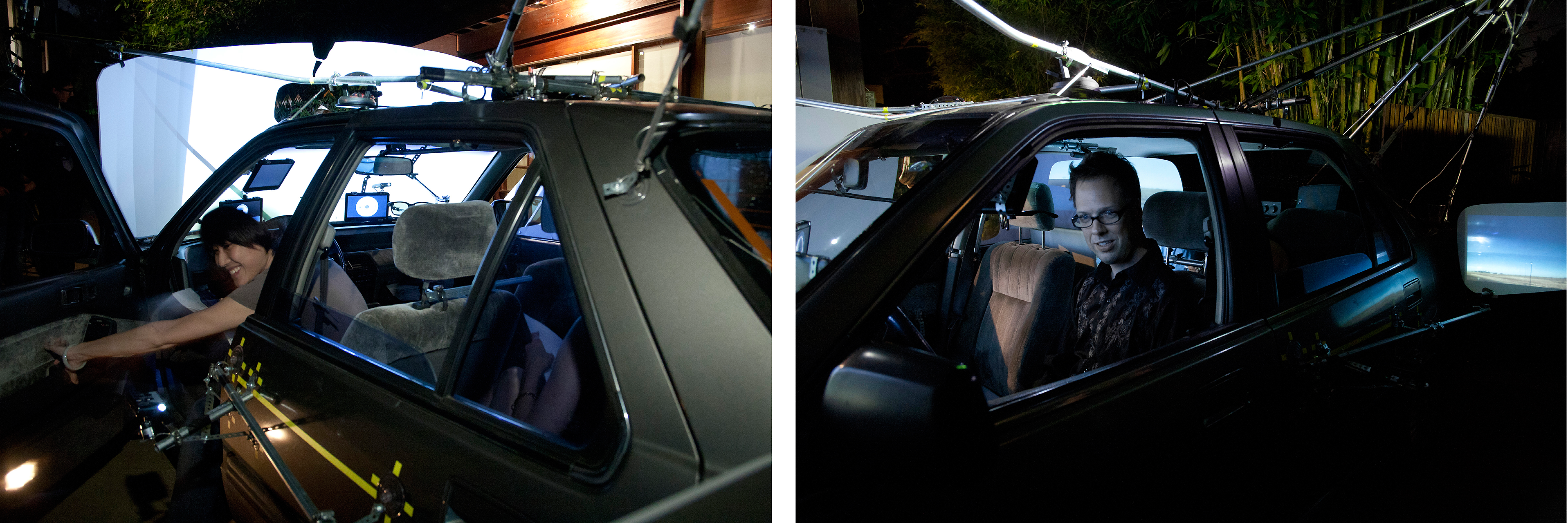

MAK OPENING - Schindler House Los Angeles - Sept. 8, 2011
‘Final Projects Group XXXII’ [group exhibition] - MAK Center for Art and Architecture, at the Schindler House, Los Angeles CA | 2011
Photos: Vivian Babuts and Mark Escribano
1/5 - 5/5
The car-installation is the setting for a mini-performance which puts the driver/exhibition visitor in the center of a multi-perspectival projection of a 360°-video of Rio Vista, a failed exuburban housing development and highly absurd infrastructural landscape, where streets, sewers, and signage are all in place, but slowly deserting again while waiting for the houses and gardens to come - a place which now represents a third kind of -scape in between urban and natural landscape.
With live-sounddesign fed into the outdated built-in radio speakers and a live GPS-voice commenting the route through this „brand-new ghost town“, both improvised by a sound-designer and an actress at the back seat, the installation converts the vehicle into a moving mapping apparatus of places and spatial setups, creating a panoramic motion cartography based on a moving eye-point and cinematic fields-of-view, turning the viewer into a spatial practitioner, and sending this apparatus exactly where Google Street-View would never go.
‘Final Projects Group XXXII’ [group exhibition] - MAK Center for Art and Architecture, at the Schindler House, Los Angeles CA | 2011
Photos: Vivian Babuts and Mark Escribano
1/5 - 5/5
The car-installation is the setting for a mini-performance which puts the driver/exhibition visitor in the center of a multi-perspectival projection of a 360°-video of Rio Vista, a failed exuburban housing development and highly absurd infrastructural landscape, where streets, sewers, and signage are all in place, but slowly deserting again while waiting for the houses and gardens to come - a place which now represents a third kind of -scape in between urban and natural landscape.
With live-sounddesign fed into the outdated built-in radio speakers and a live GPS-voice commenting the route through this „brand-new ghost town“, both improvised by a sound-designer and an actress at the back seat, the installation converts the vehicle into a moving mapping apparatus of places and spatial setups, creating a panoramic motion cartography based on a moving eye-point and cinematic fields-of-view, turning the viewer into a spatial practitioner, and sending this apparatus exactly where Google Street-View would never go.
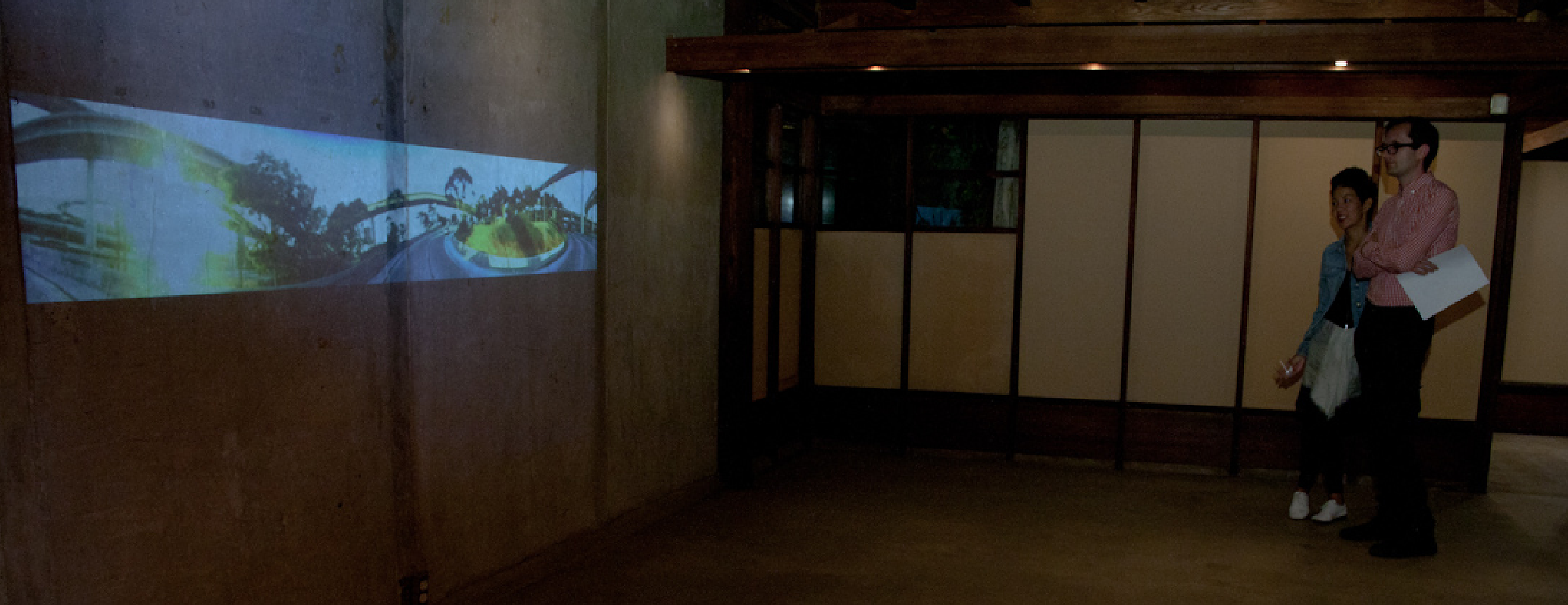
Concept
Video [Draft] - 360°-Panoramic Video [7:44 min, loop]
Exhibition Part 2, Schindler House interior space
The car as a hyper-locality between infrastructural landscapes, driving not only as a geographic, but as a cinematic experience ...
The 360°-panoramic video portrays a series of ‘artificial/infrastructural landscapes’ or different types of special land-use (or just places of a highly alternative geographical interest), blending from one to the other through spatial warps (generated by camera transitions between the wind shield, side windows and mirrors of the car), suggesting a movement/simultaneous travels through all these places at once - though physically far apart from each other, they start to intersect/overlap within the ‘hyper-local’ space of the car, the driver/viewer potentially being everywhere at once ...
Photo: Vivian Babuts
Exhibition Part 2, Schindler House interior space
The car as a hyper-locality between infrastructural landscapes, driving not only as a geographic, but as a cinematic experience ...
The 360°-panoramic video portrays a series of ‘artificial/infrastructural landscapes’ or different types of special land-use (or just places of a highly alternative geographical interest), blending from one to the other through spatial warps (generated by camera transitions between the wind shield, side windows and mirrors of the car), suggesting a movement/simultaneous travels through all these places at once - though physically far apart from each other, they start to intersect/overlap within the ‘hyper-local’ space of the car, the driver/viewer potentially being everywhere at once ...
Photo: Vivian Babuts